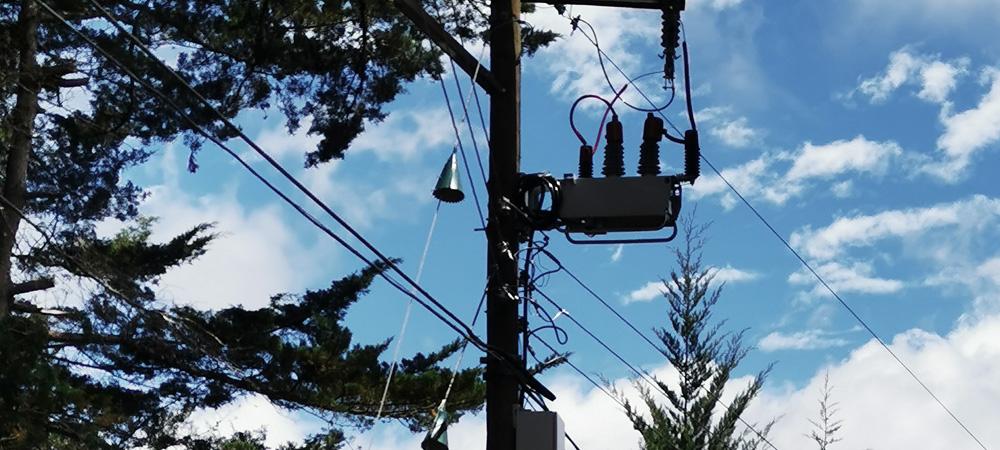Technical Article
Published 10/2022
Network Data Available from OSM Reclosers

Power system data supports good engineering. But getting medium voltage network data used to mean expensive metering equipment and insulation.
Today, this is no longer the case. Modern Reclosers such as NOJA Power’s OSM Recloser system gather a staggering array of network parameters, all available for secure remote access and download.
How to access OSM Recloser Data
There are 3 main ways to do this.
- A USB thumb drive storage transfer
- Using the integrated SD card on an RC-20 Control
- Using Remote engineering access.
Option 1 is an offline method, where operators need to:
- travel to the recloser site,
- open the recloser controller,
- insert a USB thumb drive and
- initiate a transfer from the front
This method allows for simple data transfer under high level of enterprise data access regulation. However, it is not as scalable as the other options.
Option 2 is available only to users of the RC-20. This gives users access to larger volumes of storage and faster transfers, but also is limited by local access.
Option 3 is the ideal goal, where IT teams configure a secure IP link to the Recloser Controller. Data engineers can use this link to retrieve any data in the Recloser Controller.
Without the travel requirement, this is the most scalable method.
Here’s a quick overview of the most popular data to gather from NOJA Power OSM Reclosers.
Fault Oscillography Captures
NOJA Power Recloser Controllers capture oscillography and store it in universal COMTRADE format. The RC-02, RC-03, RC-10 and RC-15 devices capture 32 samples per cycle, while the RC-20 captures 256 samples per cycle.
This information makes fault analysis, harmonic profiling and condition monitoring possible.
To access it remotely, NOJA Power users can use the complimentary PQS software.
Load Profile
A load profile is a time averaged snapshot of network parameters, captured by the Recloser Controller.
Large organisations may have load profiles features in their SCADA control centres, but the load profile feature in the Recloser controller offers a cost effective alternative for smaller organisations and one-off connections.
For example, an industrial site connected by a Recloser could access their day’s load profile and power factor over time.
This information can be used to make decisions on power factor correction, load diversity or investment in local solar generation.
Synchrophasors
NOJA Power’s flagship RC-20 Recloser Controller collects Synchrophasors. These are high-precision, standards-compliant, GPS timestamped captures of network currents and voltages.
By synchronising all RC-20’s on a network to a GPS clock, Synchrophasors gathered from multiple network nodes can be compared to calculate network impedances, harmonics, and equipment degradation.
Traditional SCADA methods don’t have the resolution required to gather these insights, but with Synchrophasors these capabilities become possible.
Synchrophasors can be saved to the local SD card storage, or alternatively streamed from the RC-20 over an IP link to a Phasor Data Concentrator or Data Warehouse.
Event Logs
All NOJA Power Reclosers capture event logs. This detailed list includes all protection operations, status changes and warnings.
Events logs are essential in post-fault analysis, and can be retrieved using NOJA Power’s CMS Software over remote Engineering Access.
The logs can be exported to Excel data formats for simple analysis,
“Getting better data from distribution networks allows our electricity customers to better plan, manage and fault find their networks. More utilities are employing professional data scientists to analyze the big data available from the network and significantly improving the operation of their networks as a result,” says NOJA Power Group Managing Director Neil O’Sullivan.
For more information, visit www.nojapower.com.au or contact your local NOJA Power representative.
Want to stay up to date with Electrical Distribution Technology?
Join our list for a free weekly technical bulletin, as we share our Global Electrical Engineering experience directly to your inbox.
Subscribe →